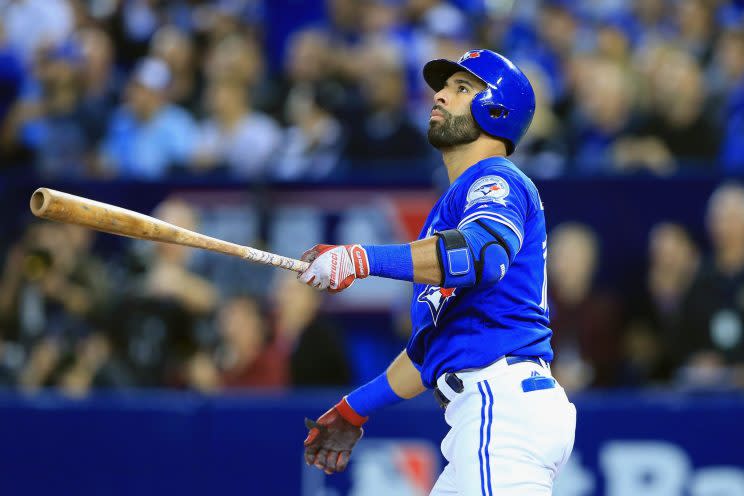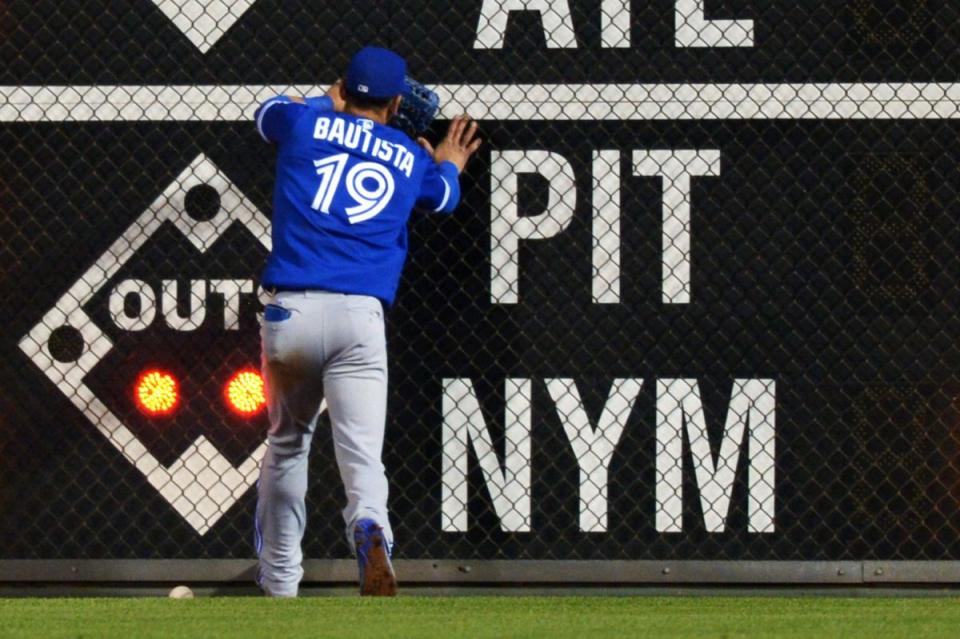Why a Jose Bautista-Blue Jays reunion is no slam dunk

Deep into the offseason there are a number of questions surrounding a Toronto Blue Jays team that has both aspirations of contending and a roster riddled with holes.
If the season started today, the Blue Jays would be thin in the outfield and bullpen and lacking depth at catcher and in the rotation. There is a lot of work to do, but in the minds of many fans the most pressing business concerns slugger Jose Bautista.
Bautista remains available on the open market and the fit, on the surface, seems obvious. He is open to returning, amenable to a short-term deal, and appears to be an upgrade over options like Melvin Upton Jr., Ezequiel Carrera, Steve Pearce or Dalton Pompey.
The Blue Jays are also the only team that can sign him without forfeiting a draft pick and the power-hitter market has been depressed to the point that his price tag might not be extravagant.
It would be easy to see this convergence of factors as a serendipitous opportunity for the Blue Jays to bring back one of their greatest stars and cushion the blow of losing Edwin Encarnacion to the Cleveland Indians.
Unfortunately, it’s not quite that simple.
The first roadblock for a Blue Jays-Bautista reunion is the 36-year-old’s declining defensive ability. Over the last two seasons his play in right field has cost the Blue Jays 11 runs according to DRS and 15.5 by UZR. Those numbers aren’t egregious, but like most outfielders his age he doesn’t do his pitchers any favours.

Under normal circumstances, an American League team like the Blue Jays could help mitigate Bautista’s limitations in the field by pencilling him in as their designated hitter with some consistency – especially when they have a fly ball pitcher like Marco Estrada or J.A. Happ on the mound.
The flexibility to accommodate Bautista in this way went out the window when the Blue Jays signed the position-less Kendrys Morales to a three-year deal in November. With Morales expected to be the team’s DH for close to 150 games, the club would have to live with Bautista out in right field on an everyday basis.
Not only would that be problematic from a run prevention standpoint, it’s not a good formula for keeping Bautista healthy. Although the former home run champ is famous for the work he puts into his maintaining body, he’s missed more than 40 games in three of the last five seasons and sustained shoulder and toe injuries playing the field in the last two.
Beyond his imperfect fit into the current Blue Jays roster, there are also longer-term considerations at play. If the club lets Bautista go elsewhere they can recoup a valuable draft pick between the first and second round of the 2017 draft.
That asset is valuable in and of itself, but it it’s especially useful to the Blue Jays for two reasons.
Firstly, the club is in a situation where they are in serious need of young talent. Not only are the majority of the Blue Jays’ key players in their 30s, their farm system ranks in the bottom half of the league.
Toronto needs to find its next wave of homegrown big-league contributors. The Blue Jays can take a big step toward accomplishing that goal if they head into the next draft with their own top pick as well as compensation picks for Bautista and Encarnacion.
The second reason the pick is particularly valuable is that this offseason is the last chance to benefit from the rules of the previous Collective Bargaining Agreement. When the new CBA was inked in December the qualifying offer system was tweaked, putting a number of conditions on teams’ ability to reap a draft pick reward for their departing free agents.
Team that loses QO free agent will get pick only if player signs contract of $50M+. Pick it gets will depend upon that team’s market size.
— Ken Rosenthal (@Ken_Rosenthal) December 1, 2016
Those rules take effect after the 2017 season, meaning the chance to accumulate draft picks the Blue Jays currently have may not come again, especially considering their market and revenue streams are far too large to warrant Competitive Balance Lottery consideration.
You could build the case for Bautista to return to the city where he became one of baseball’s biggest stars, but that case is far from bulletproof. The Blue Jays may prefer to seize a greater bounty of draft picks, improve their outfield defence and distribute free agent dollars more evenly across the gaps in their roster.
It wouldn’t be the most exciting play, but it’s certainly an understandable one.

 Yahoo Sports
Yahoo Sports 

